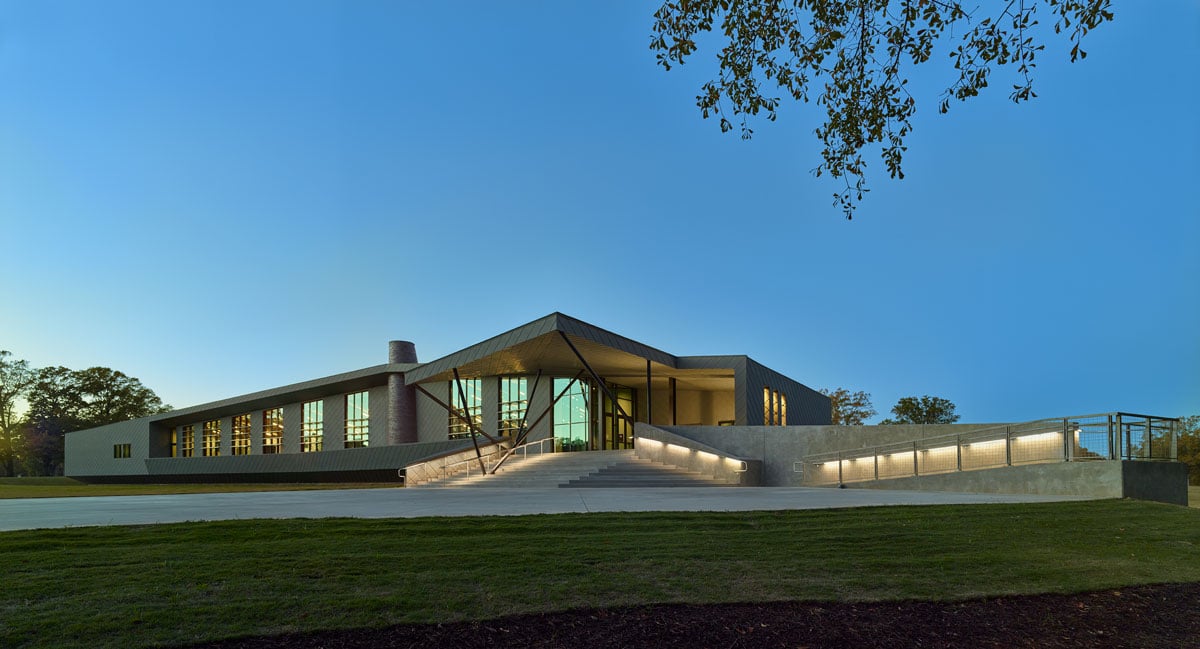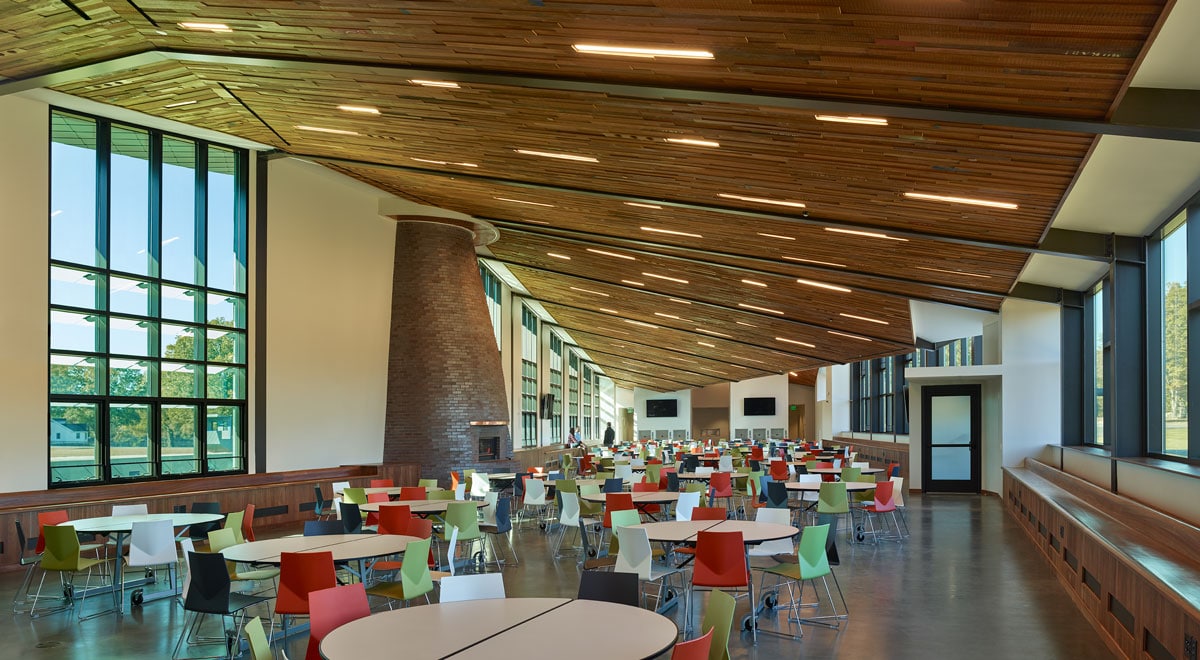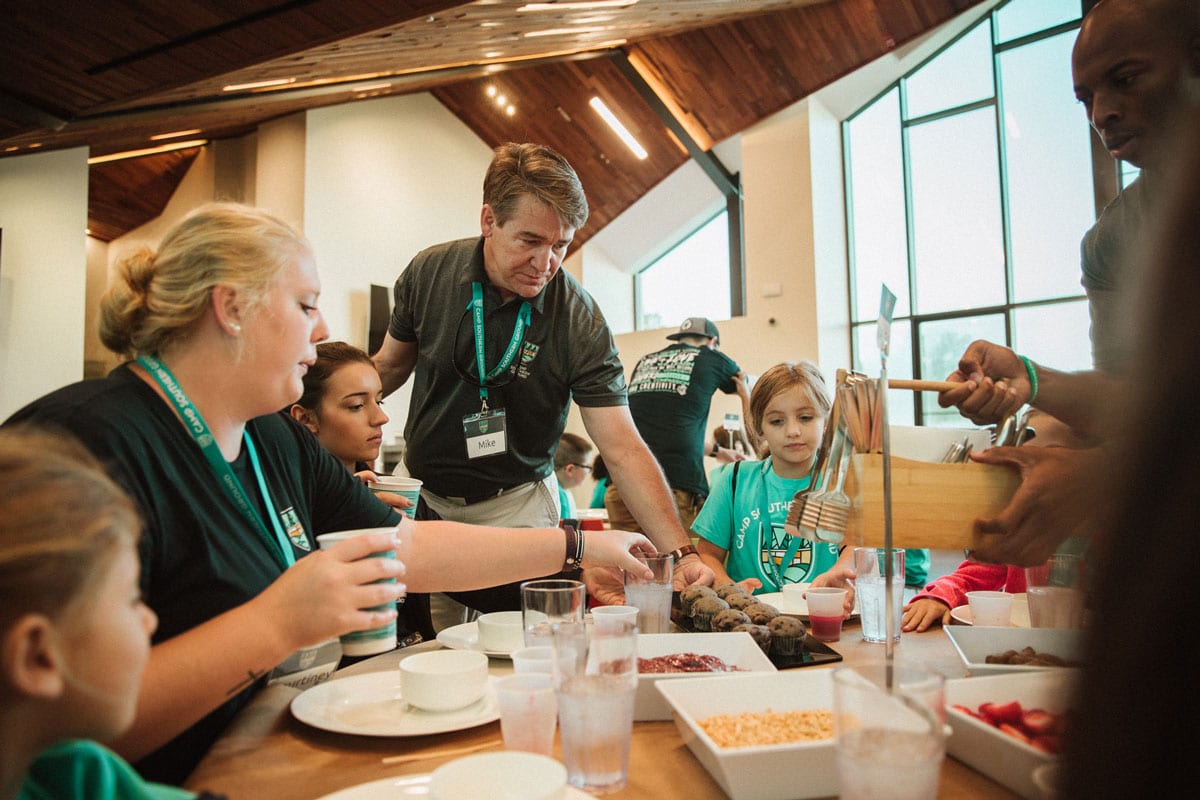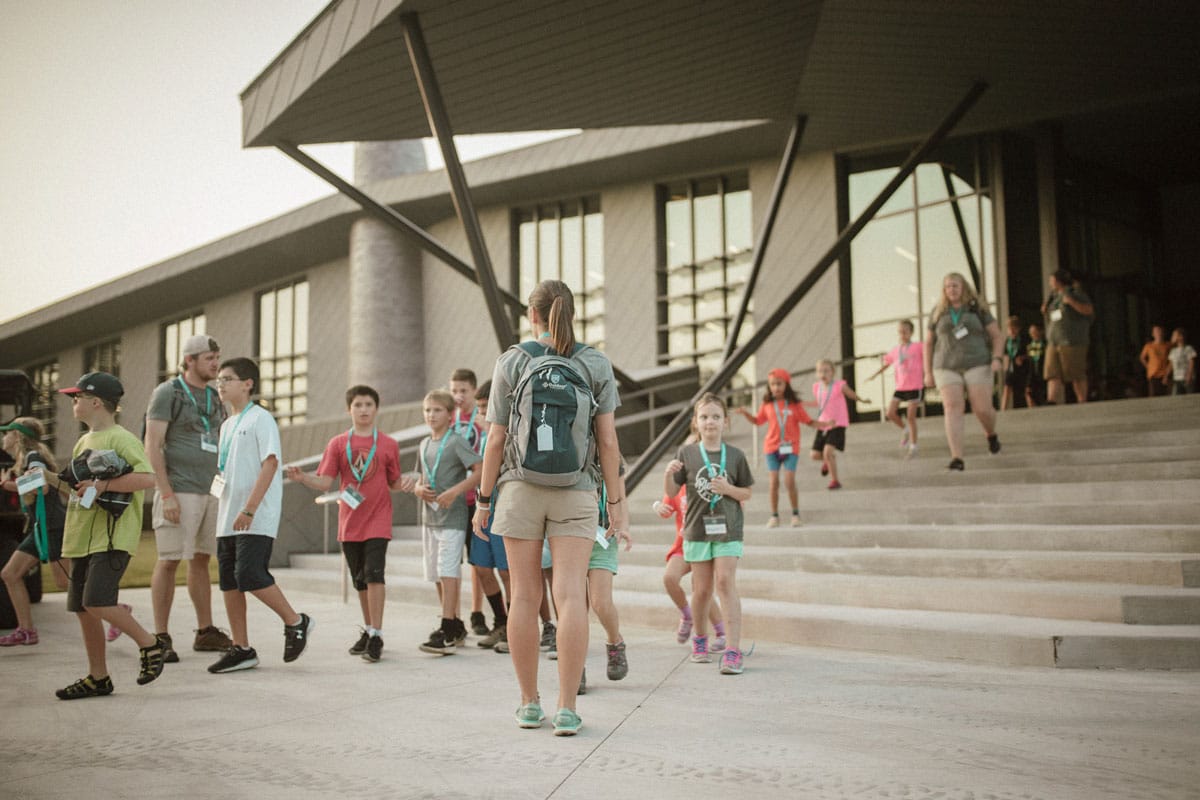
[Photo: Courtesy of Camp Southern Ground]
A Georgia camp founded by musician Zac Brown is centered around sustainability.
LOCATION: Fayette County, Georgia SIZE: 20,000 square feet COST: Confidential COMPLETION: September 2016 AWARDS: AIA Georgia Honor Award 2017; Atlanta Magazine Groundbreaker Award 2017 ARCHITECT: Perkins+Will LANDSCAPE ARCHITECT: Perkins+Will GENERAL CONTRACTOR: Joint venture: DPR; Structor Group STRUCTURAL ENGINEER: Uzun+Case MEPFP ENGINEER: Integral Consulting Engineering FOOD SERVICE CONSULTANT: Camacho Associates

[Photo: Courtesy of Camp Southern Ground]
Summer camp just got a lot cooler—and not just because of air conditioning. On 400 acres of rolling pastureland in the heart of Georgia, 35 miles south of Atlanta, Camp Southern Ground is transcending the everyday camp experience for children—especially for those with neurological and behavioral challenges and those of military families, as well as those developing typically. And at the heart of camp is the iconic Peterson Dining Hall.
Blend of Opposites
Designed by Perkins+Will and constructed by DPR Construction and Structor Group, the camp’s structural centerpiece was completed in fall 2016. “The idea for the appearance of the building was to create something that was a blend of opposites—derived from familiar forms like gable roofs and brick chimneys, yet interpreted in a new and artistic way,” says Christopher Sciarrone, Perkins+Will senior project architect. “It should be a little bit jarring and surprising but also very familiar and comfortable at the same time,” Sciarrone says of the 20,000-square-foot hall with cathedral ceilings. Indeed, the very placement of the long, rectangular dining hall is like an open-armed welcome to kids arriving at camp.

[Photo: Courtesy of Camp Southern Ground]
The building’s extremely durable, all-zinc skin was key to meeting camp founder and Grammy Award–winning musician Zac Brown’s goals for building sustainably—as was the building’s orientation. The dining hall’s east-west placement offers great views and daylight and decreases heat gain from the sun, while on the north side, high-performance glass allows for the best indirect ambient light—meaning less energy expended on burning light bulbs—and on the south side, specially designed shading mechanisms block most of the heat and ultraviolet radiation from entering the building.
Peterson Dining Hall achieved LEED certification by implementing other sustainable features as well, like a geothermal loop to regulate the camp’s domestic water temperatures, walk-in kitchen coolers, and a low-volume, low-displacement HVAC system that introduces air near the floor—cooling only the areas where people are, with a low-volume flow instead of high-volume air blasting from vents. “The nice benefit of the two systems combined is that it’s much quieter—there are no compressors. So instead of walking outside on a hot summer day in Georgia and hearing those buzzing condensers everywhere, we’ve maintained the placid, natural character of the land,” Sciarrone says.
Food for Thought
Elements throughout the camp have their own story—like the wood ceiling in Peterson Dining Hall. Most materials were sourced locally, but this wood also happened to be donated by Bob Taylor of Taylor Guitars. The wood wasn’t quite right for making musical instruments, but it was perfect for Brown’s camp.

[Photo: Courtesy of Camp Southern Ground]
The design team also avoided many chemicals, adhesives, and paints in completing the dining hall. “Children already spend way too much of their time indoors in their regular lives, so when they come to camp, they’ll hopefully be outside most of the time—but when they are inside, they’ll have a very healthy environment,” Sciarrone says.
It’s the food and dining experience, however, that Camp Southern Ground truly revolves around—and that proved most challenging for Perkins+Will. A tremendous amount of thought was given to the family-style dining and custom-designed dumbwaiters that operate vertically between the dining hall and lower-level kitchen. The architects worked closely with food service consultants to create a kitchen process flow and design a space that could function as one large open room or a multi-purpose space for smaller groups, all while concealing kitchen activities.
Teaching children about the food they’re eating when they sit down for a meal is at the heart of the Camp Southern Ground experience. A 12-acre, on-site organic farm helps them learn the benefits of growing their own food and involves them in the overall process, from planting and growing to composting with a sophisticated grinder-extractor system that recaptures everything from chicken bones to banana peels, resulting in zero waste. “The kids learn the benefits of growing what they eat—seeing firsthand what it’s like to pick their dinner, help make their dinner, eat their dinner, and then compost it back into the soil to grow more,” says Alyssa Goodman, Camp Southern Ground communications manager. “It’s an amazing thing to see a child come into the garden having never eaten a fresh green bean, insisting they’ll never try one—but then, once they’ve pulled that green bean out of the ground themselves, they eat it and love it.”
